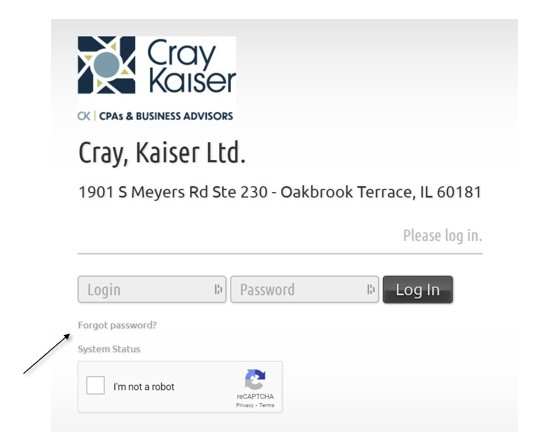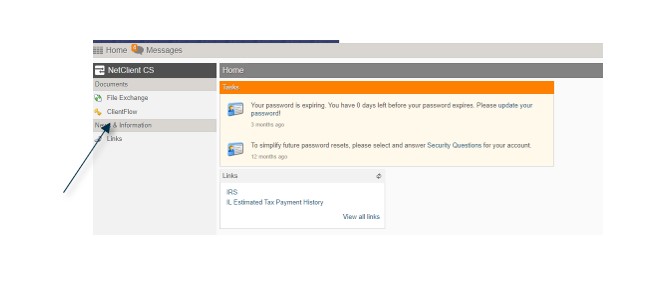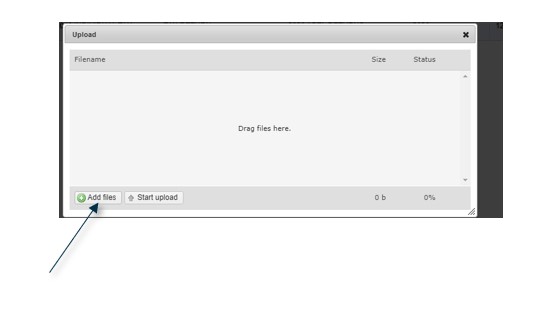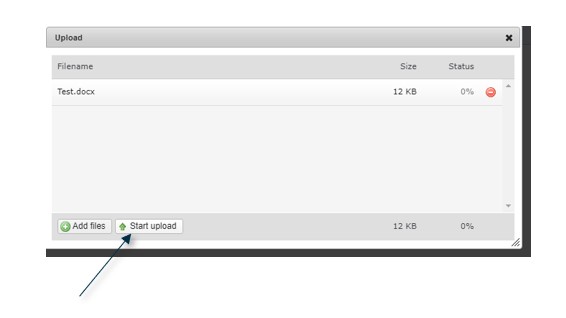


Member of Russell Bedford International, a global network of independent professional service firms.
For tax purposes, the term “basis” refers to the monetary value used to measure a gain or a loss. For instance, if you purchase shares of a stock for $1,000, your basis in that stock is $1,000. If you then sell those shares for $3,000, the gain is calculated based on the difference between the sale price and the basis: $3,000 – $1,000 = $2,000. This is a simplified example, of course. Under actual circumstances, purchase and sale costs are added to the basis of the stock.
The basis of an asset is a very important concept for tax purposes because it is used to calculate deductions for depreciation and casualties, as well as gains or losses on the disposition of that asset.
It is important to keep in mind that the basis is not always equal to the original purchase cost. It is determined in different ways for purchases, gifts and inheritances. In addition, the basis is not a fixed value, as it can increase as a result of improvements or decrease as a result of credits claimed, business depreciation or casualty losses. Below is a primer on how basis is determined in various circumstances.
Cost Basis – The cost basis (or unadjusted basis) is the amount originally paid for an item before any improvements, as well as before any credits, business depreciation, expensing, or adjustments as a result of a casualty loss.
Adjusted Basis – The adjusted basis starts with the original cost basis (or gift or inherited basis) and then incorporates the following adjustments:
Example: You originally purchased a home for $250,000. You added a room for $50,000, installed an electric solar system for $25,000, and replaced the old windows with energy-efficient, double-paned windows at a cost of $36,000. You claimed tax credits of $7,700 for the solar system and the windows, leaving you with an adjusted basis of $353,300 for your home. ($250,000 + $50,000 + $25,000 + $36,000 = $361,000 – $7,700 = $353,300)
Example: As the owner of a welding company, you purchased a generator for $6,000. After owning it for three years, you sell it to another welder. This was business property and you had taken depreciation of $3,376 over the three years. Your adjusted basis of the generator prior to the sale was $2,624. ($6,000 – $3,376 = $2,624)
Gift Basis – If you receive a gift, you assume the donor’s adjusted basis for that asset. In effect, the donor transfers any taxable gain from the sale of the asset to you (but not necessarily the loss).
Example: Your mother gives you stock shares that have a market value of $15,000 at the time of the gift. She originally purchased the shares for $5,000. You assume your mother’s basis of $5,000. If you then immediately sell the shares, your taxable gain is $10,000.
There is one significant catch. If the fair market value (FMV) of the gift is less than the donor’s adjusted basis and you then sell it for a loss, your basis for determining the loss is the gift’s FMV on the date of the gift.
Example: Let’s again assume your mother purchased stock shares for $5,000. However, this time the shares were worth $4,000 when she gave them to you, and you subsequently sold them for $3,000. In this case, your tax-deductible loss is only $1,000. (The sale price of $3,000 minus the $4,000 FMV on the date of the gift.)
Inherited Basis – Generally, a beneficiary who inherits an asset uses the asset’s FMV on the date of the owner’s death as the tax basis. The tax on the decedent’s estate is based on the FMV of the decedent’s assets at the date of death.
Example: You inherit your uncle’s home after he died in 2020. Your uncle’s adjusted basis on the home which he purchased in 1995 was $50,000, and its FMV was $400,000 when he died. Your basis on the home is equal to its FMV or $400,000.
Example: You inherit your uncle’s car after he died in 2020. Your uncle’s adjusted basis in the car which he purchased in 2015 was $50,000, and its FMV was $20,000 at his date of death. Your basis in the car is equal to its FMV or $20,000.
An inherited asset’s FMV is very important because it is used to determine the gain or loss after the sale of that asset. For vehicles, online valuation tools such as the Kelly Blue Book can be used to determine FMV. The value of publicly traded stocks can similarly be determined using website tools.
For most other assets, like real estate or family businesses, valuations generally require the use of certified appraisal services. The valuation team at Cray Kaiser is well versed in assisting clients with these more complex assets. If you have questions about your tax basis or business valuation and want to discuss how it might affect your tax situation, please call us at (630) 953-4900.
Did you know that tax planning can affect your future Medicare premium costs? If not, you are not alone. Part B and Part D premiums are determined by a number of factors, the most important one being your Income-Related Monthly Adjustment Amount or IRMAA.
IRMAA was put in place to require wealthier participants to share more in the cost of Medicare premiums. How exactly is “wealthier” determined? This may surprise you – it’s based on your income from two years prior to the time the premium is determined. In other words, your 2022 premiums will be based on your 2020 tax return. For single individuals, the cost of your premiums will increase if you report 2020 modified adjusted gross income (MAGI) in excess of $91,001. For a married couple, a MAGI in excess of $182,001 will result in higher premiums. Below is a chart outlining Part B premiums for 2022:
HOW MODIFIED ADJUSTED GROSS INCOME (MAGI) IMPACTS MEDICARE PREMIUMS

IRMAA is particularly harsh because it operates on a “cliff”. One extra dollar of MAGI can be very costly. Consider a couple who has a MAGI of just over $170,000. Their premiums are more than $100 per month higher than a couple who has a MAGI just under $170,000. Managing your MAGI is key to managing the cost of your Medicare premiums. So how can you plan?
Converting a traditional IRA to a Roth IRA is not ideal in your later years, specifically because of IRMAA. A conversion is considered additional income under IRMAA and could quickly propel you into a higher MAGI with the associated higher monthly premium. However, performing a Roth conversion well before your Medicare years is a great planning tool to avoid IRMAA issues. Why? Because qualified Roth IRA distributions are not included in your MAGI. Also, by shifting assets out of your traditional IRA, you are reducing the required minimum distributions that you’ll need to take during your retirement years.
While we don’t have complete control over life events, it is possible to control your future income. To the extent it makes tax sense to do so, consider accelerating other income items ahead of your Medicare years. For example, you may consider selling appreciated assets earlier than two years before you claim Medicare. The capital gain is included in MAGI, but your effective federal tax rate on the gain could be as low as 0%.
Working with your financial advisor to ensure that you understand how your holdings impact your MAGI is important as well. There are some holdings that are still good investments but are more tax-efficient than others. We can help if you have questions about tax planning in association with IRMAA considerations. Just call our office at (630) 953-4900.
You already know we at Cray Kaiser thrive on the personal relationships we develop with our clients. But even the best relationships can benefit from the use of technology. That’s why we developed our online portal – to allow us and our clients to safely and securely share the documentation we all need, especially during tax season. It is easy to navigate, however, if you run into difficulties, the following tips and tricks should help.







We hope these instructions help you to navigate our online portal. However, if you still have questions or issues, please don’t hesitate to contact us at 630.953.4900.
Some in Congress have proposed “free” (i.e., government-paid) tuition for community college attendance. Even if that proposal were to become law, it still leaves parents and their children-students responsible for paying for college and university attendance if the student wants a bachelor or higher degree. Over the years, Congress has provided a variety of tax incentives to help defray the cost of education. Some tax-related education benefits are currently available while others will be beneficial only with long-range planning, and the sooner these plans are implemented, the better.
Education Savings Plans – If your children are below college age, there are tax-advantaged plans that allow you to save for the costs of their higher education. While no Federal tax deduction is allowed for contributions to the plans, they do provide tax-free accumulation of earnings. It, therefore, makes sense that the earlier they are established, the more benefit you’ll get from them. Additionally, state tax deductions of up to $20,000 per year are allowed for certain plans.
In recent years Congress has expanded the definition of eligible expenses 529 Plans can cover to include the following:
Coverdell Education Savings Account—These accounts are actually education trusts that allow nondeductible contributions to be invested for a child’s education. Tax on earnings from these accounts is deferred until the funds are withdrawn, and if used for qualified education purposes the entire withdrawal can be tax-free. Qualified use of these funds includes elementary and secondary education expenses in addition to post-secondary schools. A total of $2,000 per year can be contributed (but is not deductible) for each beneficiary under the age of 18. The ability to contribute to these plans phases out when the modified adjusted gross income of the contributor is between $190,000 and $220,000 for married taxpayers filing jointly, and between $95,000 and $110,000 for all others.
Education Tax Credits—If you currently have a child or children attending college, there are two tax credits, the American Opportunity Credit (partially refundable) and the Lifetime Learning Credit (nonrefundable), that may benefit you. Both are available for qualified post-secondary education expenses for a taxpayer, spouse, and eligible dependents. Both credits will reduce your tax liability dollar for dollar until the tax reaches zero.
Qualifying expenses for these credits are generally limited to tuition. However, if required for the enrollment or attendance of the student, activity fees and fees for course-related books, supplies, and equipment qualify. For those accessing the Lifetime Learning Credit, course materials and supplies are eligible only if purchased directly from the educational institution.
Qualified tuition and related expenses paid by a student are treated as if paid by the taxpayer if the student is a claimed dependent of the taxpayer. So if a third party (most typically a grandparent, but it could be anyone besides you or the dependent) makes a payment directly to an eligible educational institution for the student’s qualified tuition and related expenses, the student would be treated as having received the payment from the third party and would qualify as having paid the tuition and related expenses personally. If the student is your dependent, you could be eligible to claim the credit.
Education Loan Interest—You can deduct qualified education loan interest of up to $2,500 per year in computing AGI. This is not limited to government student loans and could include home equity loans, credit card debt, etc., if the debt was incurred solely to pay for qualified higher education expenses. For 2022, the student loan interest deduction phases out for married taxpayers with an AGI between $145,000 and $175,000 and for unmarried taxpayers between $70,000 and $85,000. These amounts are subject to annual inflation adjustment. This deduction is not allowed for taxpayers who file married separate returns.
While it is possible that Congress may add more tax-related benefits for assisting parents and students to pay for higher education costs, you shouldn’t depend on their actions (or inactions). We recommend starting the planning process as soon as possible, and making sure not to overlook the credits and deductions available for the current students in your family. If you would like assistance in planning for your children’s future education or would like more information about the education benefits available now, please call us at (630) 953-4900.
Throughout 2020 and 2021 we’ve encouraged our business clients to take advantage of the Employee Retention Credit (ERC) that was first introduced in the 2020 Coronavirus Aid, Relief, and Economic Security (CARES) Act and further modified in the Consolidated Appropriations Act of 2021 and the American Rescue Plan Act of 2021. We assisted dozens of clients in realizing benefits from this program, but now that we are past the December 31, 2021 deadline to claim an ERC credit, all attention is now on the tax status of these funds.
The IRS has determined ERC funds are not to be included in an employer’s gross income, rather the credit is subject to “expense disallowance rules.” This means an employer’s wage deduction should be reduced by the amount of the ERC, resulting in a smaller wage expense and essentially rendering the credit taxable.
For businesses who received an ERC in 2021, as indicated above, the IRS has mandated that the amount received from your ERC be a reduction from your expenses, thereby increasing your taxable income. We are reminding all clients who received an ERC to prepare for this impact as they begin tax preparations.
For businesses that received an ERC in 2020, the regulations indicate that the same rules will apply. We are uncertain if the IRS will provide additional guidance, as this could require numerous amended tax returns.
The ERC program provided welcome relief to a number of businesses, but the tax ramifications are complicated. As always, please contact Cray Kaiser at 630-935-4900 for assistance in understanding your specific situation.
If you have children under 18, you may have already received your first advance child tax credit payment, either by check or by direct deposit. However, keep in mind you would have received this credit on your 2021 tax return when you file anyway. While we’ve discussed the Advance Child Tax Credit previously, now that the government is issuing payments, we thought we would revisit if it makes sense to opt out of the credit.
The American Rescue Plan Act of 2021 authorized advance credit payments for one year only (2021). The monthly payments are automatically made to all qualifying individuals unless they go to the IRS website and opt-out. The Biden Administration estimates that 39 million families are qualified for the advance payment, with about 2.6% opting out of the first payment (July 15, 2021).
The estimated payments are determined based on a taxpayer’s family makeup (number of children and filing status) and income, using information from 2020 tax returns (or 2019 if the 2020 return hasn’t yet been filed).
A taxpayer whose advance credit payments exceed what their actual credit turns out to be will need to repay the excess with their 2021 tax return.
Some taxpayers may be in for an unpleasant surprise when they discover they were not qualified for the advance payments they received. There are several scenarios where this could happen, such as:
Example: On their 2020 tax return Harry and Mary claimed two children, one age two and the other age seven, and their income was under the $150,000 threshold. Thus, for 2021 they would have a child age three and another age eight, and the IRS would estimate their credit for 2021 to be $6,600 ($3,600 + $3,000). Therefore, their advance monthly payments would be $550 ($6,600 x 50%) divided by six months.
In 2021, Harry and Mary both received pay increases pushing their income above the income thresholds. With their higher income, they are no longer eligible to receive the credit. As a result, they would have an additional tax due of $6,600, the amount of the advance credit received.
If you’ve received advance child credit payments, in January 2022 the IRS will send you a letter recapping the amount of advance credit they sent you. This information will be needed when reconciling the advance credit payments with the actual credit on your 2021 return.
Contact Cray Kaiser at (630) 953-4900 if you have questions about how the advance payments may impact your 2021 tax return, whether you should opt-out of additional advance payments, or if you want to adjust your withholding or estimated tax payments to account for the advance credits.
The Internal Revenue Service (IRS) is reminding entities with Employer Identification Numbers (EINs) of their responsibility to update that information whenever the contact information or responsible party changes. IRS regulations require EIN holders to update responsible party information within 60 days of any change. Notifying the IRS of those changes is easily accomplished by filing Form 8822-B, Change of Address or Responsible Party – Business.
Especially given the pandemic, taxpayer contact information may be outdated due to moves, office closures, etc. By alerting the IRS to your new address, you will ensure that you are receiving tax notifications on a timely basis.
The IRS is urging those entities with EINs to update their applications if there has been a change in the responsible party or contact information, calling it a key security issue. According to the IRS, the data around the “responsible parties” for business-type entities is often outdated or incorrect, meaning that the IRS does not have accurate records of who to contact for potential fraudulent claims or identity theft issues. Inaccurate information results in a time-consuming process to identify the point of contact so the IRS can inquire about a suspicious tax filing.
It is estimated that there are approximately 100,000 EIN holders with outdated responsible party information. The IRS completed a mail campaign to these EIN holders in August.
Responsible Party: Generally, a responsible party is the individual (a natural person) who ultimately owns or controls the entity or who exercises ultimate effective control over the entity. The person identified as the responsible party should have a level of control over, or entitlement to, the funds or assets in the entity that, as a practical matter, enables the person, directly or indirectly, to control, manage, or direct the entity and the disposition of its funds and assets.
Here are some tips for completing Form 8822-B (used by businesses):
If you need to change both the business and personal contact information, use Form 8822 to change your home address. Although the IRS will automatically update their records to match a taxpayer’s most recent tax filing, it is wise to file Form 8822 to make sure you receive any correspondence from the IRS since the IRS is only required to mail correspondence to your last known address.
If you have a state filing obligation, you should also notify the appropriate state agencies of the changes.
After you file either Form 8822-B or Form 8822, please forward a copy to this office so we can update your file. If you need assistance with these tax forms, Cray Kaiser can help. Please give us a call to discuss changes in your contact information.
More and more Americans are on the move these days. Remote work is increasingly popular and allows employees the flexibility to not necessarily live where they work. Additionally, tax changes introduced by the 2017 Tax Cuts and Jobs Act (TCJA) limited the important SALT (State and Local Tax) deduction to $10,000 for single and married individuals. That deduction had previously made residing in high-tax states less costly for affluent individuals.
When you combine those two factors alone, it makes sense that people are looking to see where the grass may be greener. There’s also the fact that states may begin adding new taxes to make up for budget shortfalls, or in the case of Illinois, seeking to increase taxes among select taxpayers. So, it comes as no surprise we are getting a lot of questions about relocating.
If you’ve found yourself looking at real estate ads in a different state, it is important that you take a 360-degree view of what moving would mean for you. As attractive as it may seem to pack up your things and move to a state with a more appealing tax scheme, there are other things to think about. If you move, make sure you do so in a way that accomplishes your tax goals.
Be sure to factor the following into your decision-making process.
Moving to another community is a shock to the system in more ways than one, but moving to a different state will have an even greater impact. Not only do you need to think about the quality-of-life issues involved, but also the implications of owning multiple homes in multiple states. You will need to choose where your primary residence is going to be, and make sure you can prove compliance. Non-tax-related considerations include:
If you’ve already included the non-tax considerations listed above and you are still intent on making a move, then it is time to understand what doing so will mean to your economic picture. It’s a good idea to sit down and discuss your plans with your financial advisors long before putting your home up for sale, as you may have second thoughts after weighing the consequences of a move. Among your considerations are:
Like everything else in life, relocating to another state and making it your primary residence is not as easy as just deciding to do it. It is important that you do your due diligence to make sure that you have complied with everything required of your new home. You need to follow several essential steps in order to reap the tax rewards that you are seeking. Here are just a few of those steps:
Add contacting the Cray Kaiser office at (630) 953-4900 to your to-do list to make sure that all-important items have been addressed and everything is reviewed and updated with your estate plan.
In 2021, taxpayers have an option to fund either a traditional IRA or Roth IRA, up to the maximum limit of $6,000 ($7,000 if you are age 50 or over). Both are good options, with different treatments. The traditional IRA lets you choose to deduct the contributions; however, future distributions are taxed at the then current tax rates. Roth IRAs work differently as there is no deduction on the contributions, likewise, there is no tax when amounts are taken out. Further, Roth IRA does not require Required Minimum Distribution (RMD) and Roth IRAs can be passed down tax free to heirs.
The obvious caveat to the above is that for high income taxpayers —defined as the 2021 adjusted gross income (AGI) over $140,000 for individuals and over $208,000 for married filing jointly—contributions to Roth IRAs are disallowed. While there are AGI limits on deductions for traditional IRA contributions, there are no limits on contributing to a traditional IRA without taking a deduction (known as nondeductible contributions).
This strategy, under current tax laws, allows the taxpayer to fund their Roth IRA via the nondeductible IRA route. Simply put, the high-income taxpayer would contribute to their traditional IRA as a nondeductible amount. As this amount is not deducted on their tax return, they have tax basis in their contribution. Once this is established, then the taxpayer can convert the nondeductible contribution into a Roth IRA, without paying any tax on the conversion. Please note, if between the time you contribute to your IRA and convert to your Roth, the balance increases due to the market changes, then any gains above your basis is taxed. This strategy can be used yearly. Most of our clients usually leave the money in a cash account and then convert it soon after, so the increase in the balance is insignificant.
The above is the simple version that assumes this is the only IRA held by the taxpayer. However, there is a large pitfall you should watch out for as it can produce unexpected taxable income. When you convert your IRA to Roth IRA, the IRS views all your IRAs together as one pool to be converted (not an account-by-account basis, nor by deductible/nondeductible buckets).
Therefore, if you have other traditional IRAs that have both deductible and nondeductible contributions, then a portion of your conversion will be subject to tax.
Example: Mary has $7,000 in an IRA from many years ago, when she was able to take a deduction on her contributions. In 2021, her AGI is $215,000, and she cannot contribute to a Roth or deduct any IRA contributions, so she decides to fund her IRA with a nondeductible contribution of $5,000. Five months later, she converts the $5,000 she contributed as a nondeductible IRA. On her tax return, she will have $2,917 that is subject to tax. This is the pro-rata of both the deductible and nondeductible portions of all her IRA accounts (at all brokerages). In Mary’s case, the total IRA balance is $12,000, her deductible portion is $7,000 and she converted $5,000.
$7,000 / 12,000 = 58.33% that is the taxable portion.
$5,000 * 58.33% = $2,917 amount that is taxable on her return based on $5,000 converted.
There is a way to maneuver around this, which would involve rolling over the deductible IRAs to an employer plan (if allowed), but it does add complication and would be dependent on a few factors specific to the taxpayer.
The rules on creating the backdoor Roth IRA are complex. Cray Kaiser is here to help if you have further questions about utilizing the backdoor Roth IRA strategy. Please contact us today at 630-953-4900.
On Friday, August 27, 2021, Illinois Governor J.B. Pritzker signed Public Act 102-0658 into law. The Act provides a significant tax break to owners of flow through entities (S corporations and partnerships). According to Crain’s Chicago, a rough estimate of tax savings to affected taxpayers is $80 million annually. The tax break will not affect Illinois tax revenues; it will only affect federal tax revenues.
As you may recall, the Tax Cuts and Jobs Act of 2017 created a $10,000 annual federal limitation on the deduction of state taxes (including income taxes and real estate taxes). The federal limitation created an indirect tax increase on owners of flow through entities who could not fully deduct the state taxes paid on their flow through business income.
Certain states began to look for workarounds to the state tax limitation. For example, what if the state allowed a business to pay the state income tax on behalf of their owners, so that it would become a liability to the business and not the individual? As businesses are not subject to the $10,000 tax limitation, could this create an opportunity to deduct state taxes that would have otherwise been nondeductible to the individual owner? The IRS has recently blessed such workarounds, and Illinois has now enacted the workaround into law.
Effective for tax years ending on or after December 31, 2021, and beginning prior to January 1, 2026, Illinois businesses can make an irrevocable annual election to have the business bear the burden of the state tax on the Illinois pass through income. For example, Bob owns an Illinois S corporation that has expected Illinois taxable income of $100,000. Due to high real estate taxes in his home county, Bob gets no benefit from a federal tax deduction of Illinois state taxes paid as his real estate taxes exceed the $10,000 limit. In 2020, Bob paid 4.95% tax on the business income, or $4,950.
Fast forward to 2021. Bob’s S corporation can elect to pay the tax on Bob’s behalf and can claim a federal tax deduction of the $4,950 of tax paid. When Bob files his Illinois income tax return for 2021, he will be allowed a credit of $4,950 on his return. In essence, the Illinois tax stays the same, but Bob has created a federal tax deduction for the state tax paid. Assuming a 37% federal income tax rate, the benefit is a little more than $1,800.
We understand that you may have a lot of questions about how the new law will affect you. Cray Kaiser will be looking out for additional guidance on the provisions. In an upcoming blog, we will take a deeper dive into the reasons why a business may not want to pursue this provision.
If you have questions on how the provision will affect you, please give Cray Kaiser a call at (630) 953-4900.